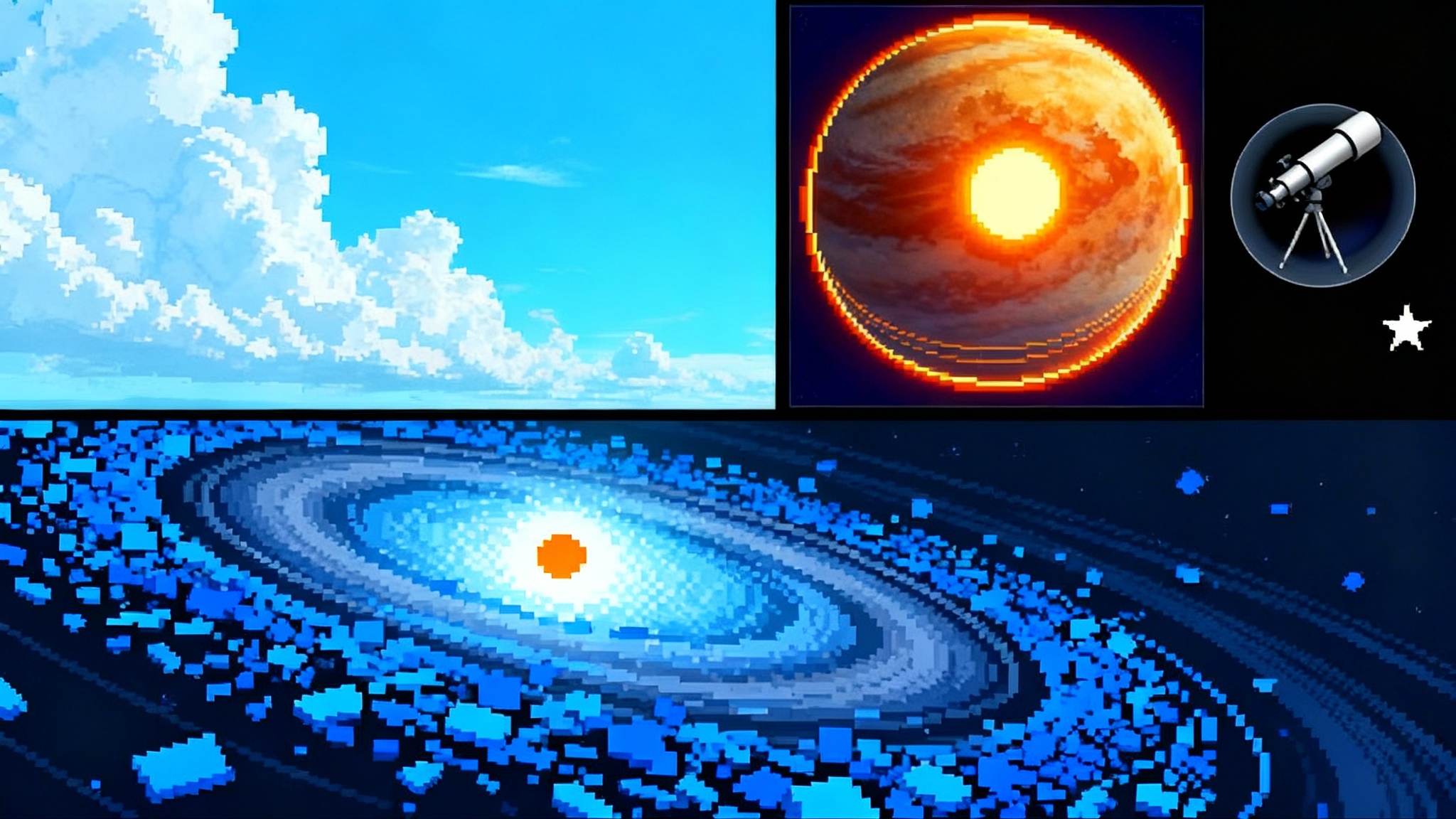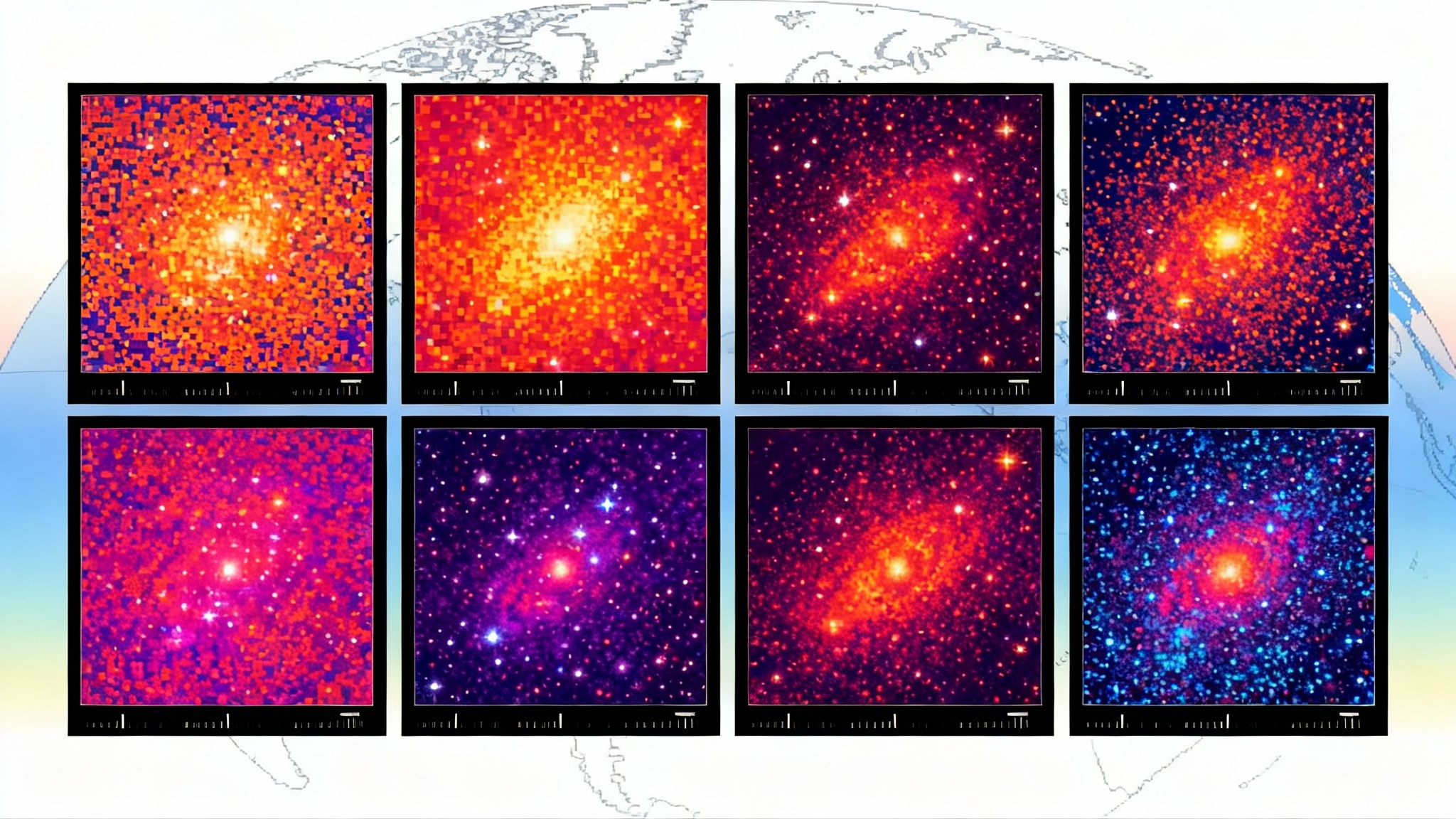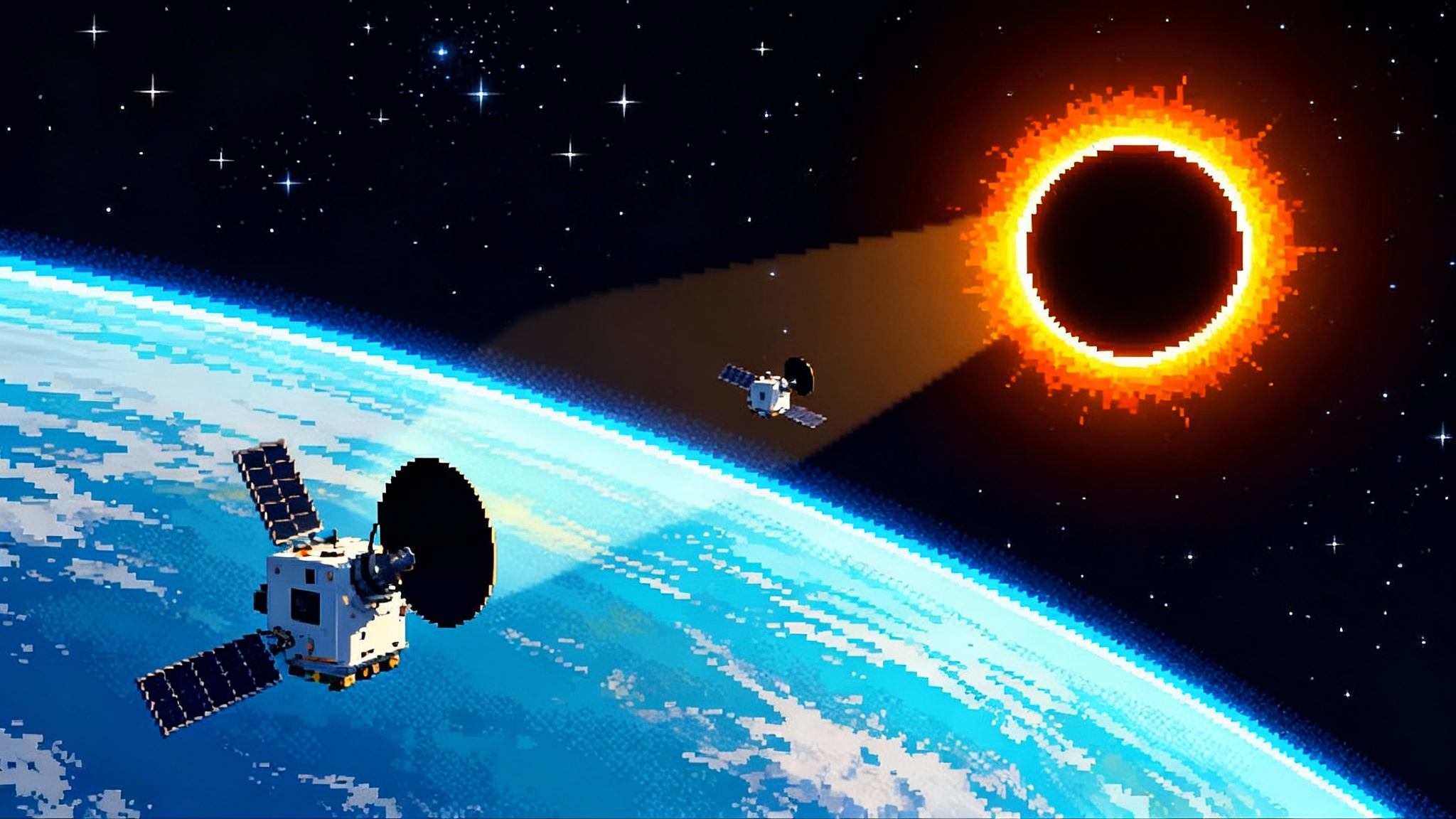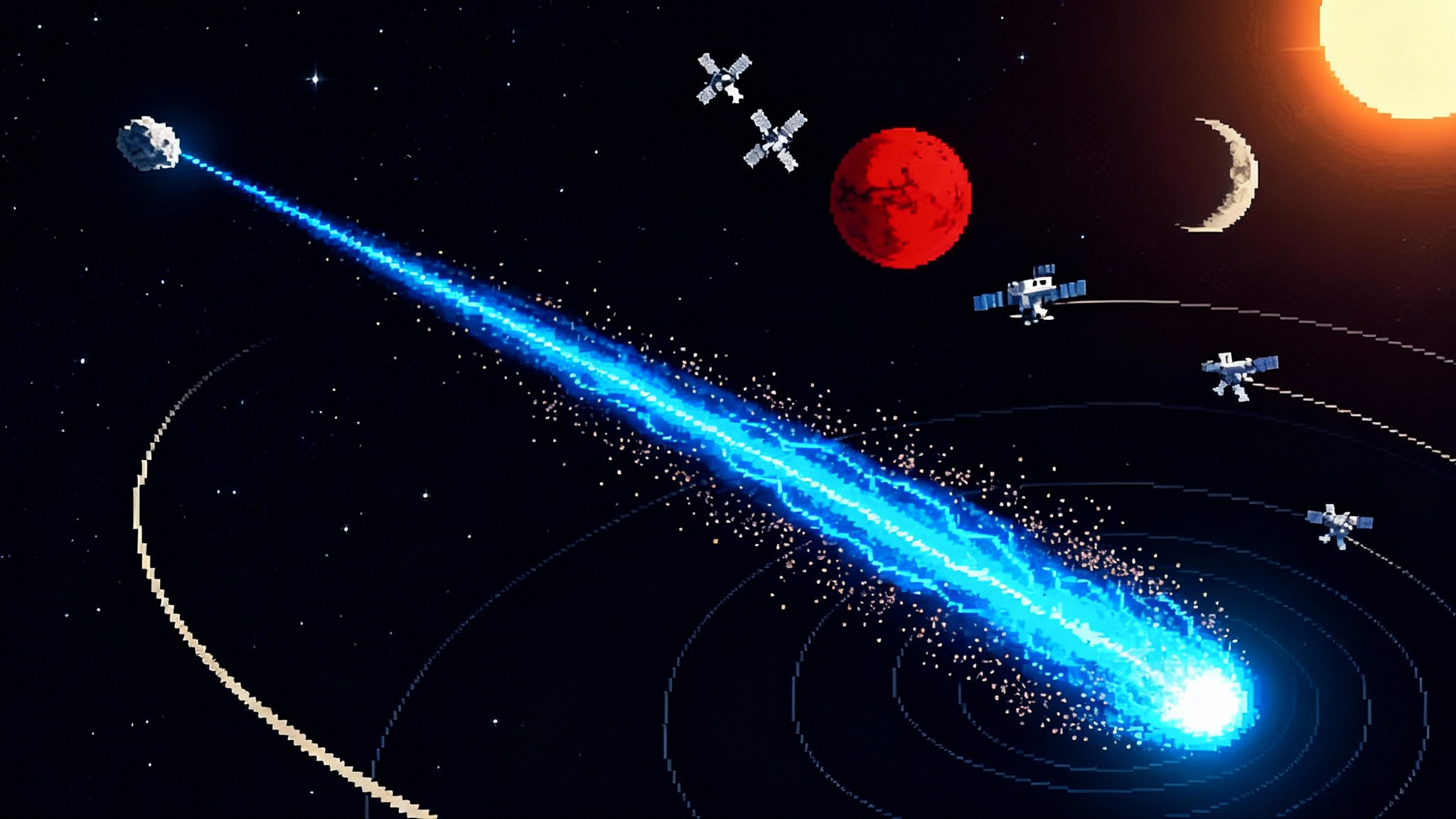New Glenn’s Mars Shot launches ESCAPADE and a new era
On November 12, 2025, Blue Origin’s New Glenn lifted NASA’s twin ESCAPADE probes and a new playbook for planetary science. Compact Mars orbiters paired with commercial heavy lift and L2 staging promise faster, cheaper missions that reduce risk for future crews.

A new kind of Mars launch day
At Cape Canaveral on November 12, 2025, Blue Origin’s towering New Glenn cleared the pad with NASA’s twin ESCAPADE probes tucked inside its seven meter fairing. The launch window opened at 2:50 p.m. Eastern time after earlier weather scrubs, a detail that matters because it shows how tightly modern science missions now weave around commercial launch schedules. In one of New Glenn’s early flights, this is not just a lift to space. It is the clearest signal yet that compact interplanetary spacecraft can ride on big commercial rockets and still run a sophisticated science campaign. That shift, more than the spectacle, is the headline of the day. The Space.com launch advisory set the cadence for the afternoon window.
What makes this flight different is not the fireworks but the economics and the choreography. Historically, a Mars mission was a once per decade centerpiece that monopolized a rocket and a budget. ESCAPADE, by contrast, is small and nimble, designed to be inexpensive to build and quick to fly. It hitched a ride on a heavy lifter whose business model is cadence and capacity. These two trends met today on the same launch pad.
Why two small orbiters beat one big one
ESCAPADE is a twin spacecraft mission led by the Space Sciences Laboratory at the University of California, Berkeley, with satellites built by Rocket Lab. The pair is called Blue and Gold, a nod to Berkeley’s colors. Think of each probe as a tough, mini fridge size lab that can fly formation around Mars. One orbiter alone gives you a weather report at a single spot in the sky. Two, separated by hundreds to thousands of kilometers, let scientists tell whether a sudden change is moving through space or just flickering in time at one location.
If you have ever tried to understand a storm with one rain gauge, you know the problem. A downpour at noon could be a local cloudburst or the leading edge of a front. Put a second gauge a few neighborhoods away and the pattern snaps into view. ESCAPADE brings that logic to Mars, where space weather can shift faster than a single orbiter can orbit. The approach echoes precision formation work like Proba-3’s formation telescope.
What ESCAPADE will actually map
Mars once had a thick atmosphere. Today it is thin and dry. The culprit is not only gravity and time but also the constant blast of the solar wind. Unlike Earth, Mars lacks a global magnetic field. Instead it carries patchy, fossilized magnetic bubbles in its crust. Around the whole planet there is an induced magnetosphere, a kind of magnetic sheath formed by the solar wind wrapping around a conducting atmosphere. That sheath breathes and ripples as solar conditions change, and when it does, charged particles can strip the upper atmosphere away.
ESCAPADE’s purpose is to map how this space weather engine works. Each satellite carries three core instruments, chosen for clarity rather than complexity:
- A magnetometer that measures the direction and strength of magnetic fields, like a compass that records every twitch and tug of the Martian magnetic environment.
- An electrostatic analyzer that counts and sorts charged particles by their energy, so scientists can see whether plasma is flowing toward or away from the planet and how hard the solar wind is pushing.
- A Langmuir probe that samples the density of electrons, giving an immediate read on how puffed up or collapsed the upper atmosphere is.
Working together, these instruments show cause and effect. When the solar wind intensifies, the magnetometer should catch the sheath compressing. The analyzer should see more energetic ions and electrons. The Langmuir probe should register changes in the plasma around the planet. That is the chain of events scientists want to nail down, not in averages but in the fast, minute by minute dance of a storm. NASA’s mission brief spells out the scientific goals with welcome precision, including how paired measurements separate changes in space from changes in time. See NASA’s ESCAPADE mission description.
How magnetosphere maps reduce risk for future crews
For human explorers, space weather is not an abstract. Solar energetic particles can spike radiation exposure during the months long cruise to Mars and during time in orbit. At Mars, the induced magnetosphere and those crustal magnetic patches can slightly alter particle fluxes and the behavior of the upper atmosphere. ESCAPADE’s measurements help in three concrete ways:
-
Better radiation forecasting. By tying solar wind conditions to the response of Mars’ magnetic sheath and ionized upper atmosphere, the mission improves models that predict when and where particle radiation spikes are likely. That helps mission controllers time traverses, allocate extra shielding, or require crew to shelter inside storm safe zones.
-
Safer communications and navigation. Space weather reshapes the ionosphere that radio signals pass through. Fast maps of where the ionosphere is dense or disturbed can help operators tune frequencies, schedule high priority uplinks, and reduce dropouts during orbital maneuvers or critical surface operations.
-
More reliable aerobraking and entry planning. The density of the upper atmosphere determines how strongly it will slow an incoming vehicle. Variability driven by the Sun can shift that density by tens of percent. With ESCAPADE’s data, planners can refine models of drag and heating, widening safety margins for crewed vehicles that dip into the atmosphere to save propellant.
None of this creates a magic shield. It is more like having a good coastal weather service rather than sailing blind. You still build strong hulls and choose sturdy routes, but you avoid the worst seas and time departures with the tides.
The L2 layover that rewires interplanetary schedules
The trick that makes today’s launch so flexible is where ESCAPADE goes first. Instead of aiming directly at Mars, New Glenn sends the pair toward the Sun Earth L2 region about 1.5 million kilometers from Earth. This is a gravitationally quiet zone where a spacecraft can orbit with modest fuel use. There the twins will operate as space weather sentinels while they wait for the next planetary geometry that allows a low energy path to Mars.
This is a simple but powerful idea. Deep space parking turns a narrow planetary window into a wider series of steps. Launch when the rocket is ready, drift in a stable holding pattern, then depart on time for Mars. It fits commercial cadence, where vehicles like New Glenn, Vulcan, Ariane 6, and Falcon Heavy move payloads frequently, and it protects the science schedule from late pad conflicts or local weather. It also creates a testbed. While waiting at L2, ESCAPADE can exercise instruments, rehearse formation flying, and validate communications before committing to the long cruise.
The result is a modular interplanetary supply chain. Heavy lift rockets handle the brute work of escaping Earth gravity. Compact, standardized probes handle the science and the fine maneuvers. Missions become more like container shipping, less like bespoke voyages. When something slips, you reshuffle stages rather than replan the entire expedition.
The price shock that opens the floodgates
Cost is where the new model bites hardest. ESCAPADE’s total mission budget is under one tenth of flagship Mars missions from a decade ago. The launch contract itself came in far below what a dedicated interplanetary rocket used to cost. Those numbers are not a fluke. They come from three levers that will be reused again and again:
- Mass produced smallsat hardware. Rocket Lab’s bus takes lessons from high volume satellite production. Repeatable components and test procedures mean less custom engineering.
- Big fairings with room to spare. New Glenn’s fairing could swallow a bus. That means complicated adapters, multiple payloads, and benign environments that reduce one off engineering.
- Staging orbits that buy time. Parking at L2 cuts the penalty for missing a day on the pad. Fewer last minute cancellations and de tank cycles mean fewer ways to burn budget.
This is not about going cheap for its own sake. It is about lowering the floor so more teams can get above it. University led groups can propose focused missions. NASA can run more experiments in parallel, then scale up what works. Industry can attach demonstrations to a flight, like communication relays or sensor prototypes, without owning an entire window to Mars. The same dynamic is reshaping adjacent efforts like Mars Sample Return rebooted.
What matters most today, landing or leaving
Blue Origin will again attempt to land New Glenn’s first stage on an ocean platform downrange. Reusable boosters are crucial to long term cost reduction, and a successful recovery would be a milestone. But the ESCAPADE story does not hinge on that landing. The mission’s decisive moments are different:
- Injection accuracy. Did New Glenn place the upper stage exactly on the corridor to L2 with enough margin to maneuver.
- Clean separation and checkout. Do both probes power up, point their antennas, and begin talking clearly to the Deep Space Network.
- Instrument health. Are the magnetometer boom and plasma probes behaving as expected during initial commissioning.
- Cruise planning. Does the flight dynamics team lock in the sequence that takes the twins from L2 to an Earth flyby in late 2026 and onward to Mars in 2027.
A booster landing would be a bonus for the launch provider. Getting ESCAPADE into a stable, efficient path is the win for science.
The bigger industry shift, in plain terms
When a heavy lift commercial rocket and a pair of small orbiters share a mission like this, three things change for interplanetary science:
- Speed. Ideas get tested sooner. A laboratory can propose, build, and fly inside a few years. Lessons feed the next wave while today’s graduates are still on the project.
- Diversity. More teams and more countries can afford focused missions. One mission can target the Martian magnetosphere; the next can chase a comet tail or fly past a near Earth asteroid.
- Resilience. If a payload fails, you have not sunk a decade and a billion dollars. You try again within a launch season.
From Earth’s orbit outward, this looks like the transition that changed computing. Mainframes did not disappear when personal computers arrived, but the center of gravity shifted. In space, billion dollar flagships will still do what only they can do. The new action is everything they cannot get to quickly. You can already see the pattern in programs like commercial moon landings in 2025.
Practical takeaways for agencies, labs, and companies
- Design for formation flying. Two or more small spacecraft can beat one large platform for dynamic environments. Budget for the extra navigation and communications early.
- Make cruise time useful. If you plan an L2 layover, schedule instrument calibration, software updates, and communications experiments instead of sitting idle.
- Treat launch as a service. Build to standard payload adapters and fairing environments. Being launch agnostic keeps your schedule flexible and your bids competitive.
- Share data fast. ESCAPADE’s value spikes when modelers can ingest real time measurements into prediction tools for radiation, communications, and aerobraking. Plan pipelines, not press releases.
What ESCAPADE will tell us first
Expect the earliest science to be about the background heartbeat of the Martian environment. How often does the induced magnetosphere pulse. How much does the ionosphere swell when the Sun burps. As solar activity rises and falls, the twins will track how energy flows from the solar wind into Mars, then into escaping atmospheric ions. That flow is the meter that tells us how quickly Mars loses its air today, and how variable that loss is when storms hit.
In the months just after arrival, Blue and Gold will fly like pearls on a string, sampling the same region within minutes of each other. Then the team will separate them to crisscross orbits, converting two lines of data into a rough 3D picture of how the Martian plasma environment breathes. Those measurements will be compared with records from predecessors like MAVEN. Where MAVEN gave a single, enduring vantage point with deep detail, ESCAPADE will trade detail for simultaneity, which is exactly what you need to understand fast changing systems.
The road from today to first results
Here is the likely sequence from today’s liftoff to the first peer reviewed plots:
- Days to weeks after launch: commissioning, instrument checkouts, and first plasma and magnetic readings near L2.
- About one year after launch: a departure burn sets up an Earth flyby in late 2026 to slingshot toward Mars. Additional cruise instrument runs continue to tune models.
- Late 2027: arrival at Mars and entry into elongated science orbits. Initial joint passes along the same track begin the baseline time lag measurements.
- Months after arrival: diverging orbits start to build a 3D view. Early results on how crustal magnetic patches steer particles will follow.
Through every phase, the same idea carries forward. Use two vantage points to turn ambiguity into clarity. Use commercial lift to turn plans into launches.
The quiet revolution behind the roar
Whether or not New Glenn’s booster lands today, the more durable headline is already written. Two compact spacecraft are on their way to map the invisible weather that shapes Mars. They got there by buying a seat on a commercial heavy lifter, by parking at L2 to wait for the right window, and by carrying simple, targeted instruments that answer a sharp question.
That is a model that scales. It reduces risk for crews who will need better storm forecasts and steadier communications. It lowers cost for agencies that want more shots on goal. It speeds the pace of discovery by letting small teams fly often. The rocket noise fades by sundown. The new playbook is what will keep echoing through the next decade of interplanetary science.








